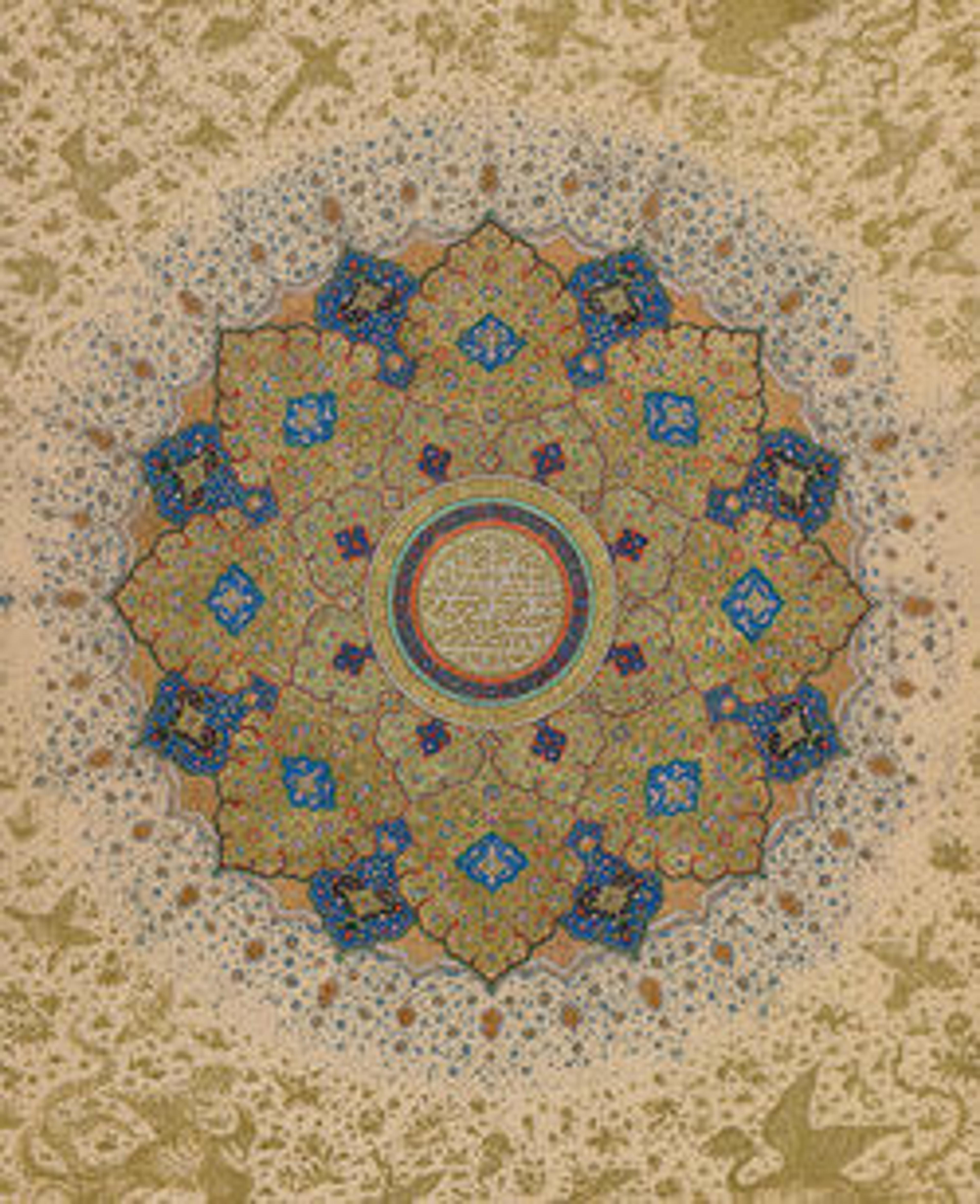Bed Cover or Wall Hanging
Foreign travelers from as early as Marco Polo knew of the quality of the embroidery produced in Gujarat, a state on India’s northwestern coast, and as soon as European trade with India picked up in the early 1600s, embroidered Gujarati textiles were identified as among the most lucrative goods for export. This fragment from a hanging is one of the earliest examples of this overseas commerce, and comes from the Ashburnham House in Sussex, England. Embroideries like this were probably made at different centers throughout Gujarat, but are usually associated with Cambay, the port from which they were exported.
Artwork Details
- Title:Bed Cover or Wall Hanging
- Date:17th century
- Geography:Attributed to India, Gujarat
- Medium:Cotton, silk; plain weave, embroidered, originally quilted
- Dimensions:Textile: L. 76 1/2 in. (194.3 cm)
W. 45 in. (114.3 cm)
Mount: L. 84 5/8 in. (214.9 cm)
W. 53 7/8 in. (136.8 cm)
D. 2 3/4 in. (7 cm)
Wt. 76 lbs. (34.5 kg) - Classification:Textiles-Embroidered
- Credit Line:Gift of Victoria and Albert Museum, 1954
- Object Number:54.21
- Curatorial Department: Islamic Art
More Artwork
Research Resources
The Met provides unparalleled resources for research and welcomes an international community of students and scholars. The Met's Open Access API is where creators and researchers can connect to the The Met collection. Open Access data and public domain images are available for unrestricted commercial and noncommercial use without permission or fee.
To request images under copyright and other restrictions, please use this Image Request form.
Feedback
We continue to research and examine historical and cultural context for objects in The Met collection. If you have comments or questions about this object record, please contact us using the form below. The Museum looks forward to receiving your comments.
